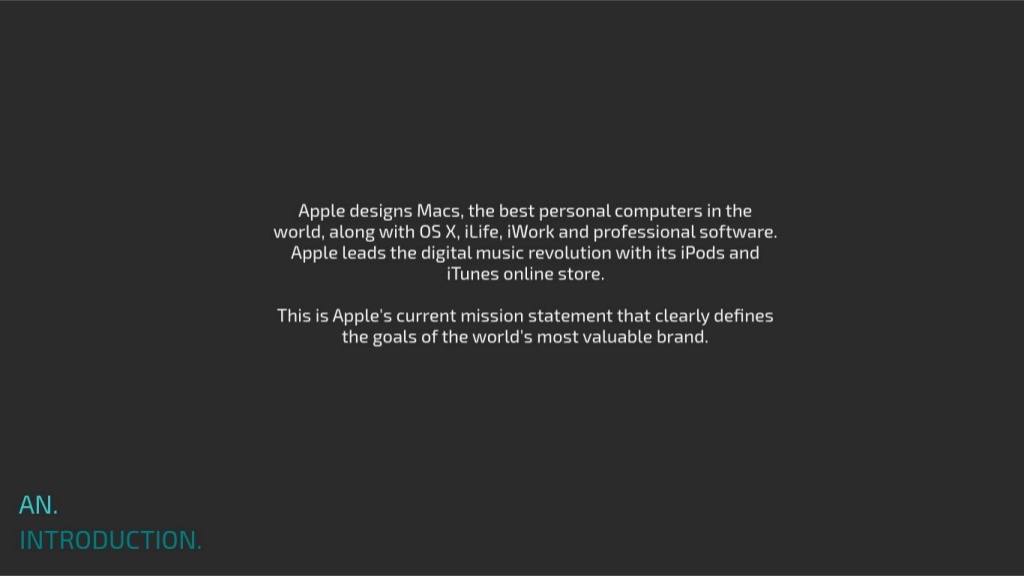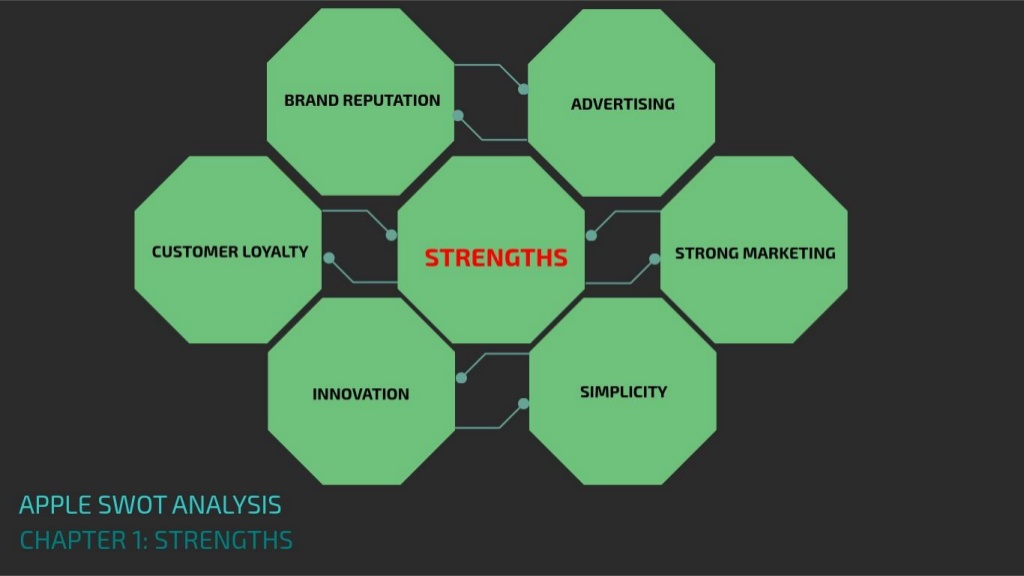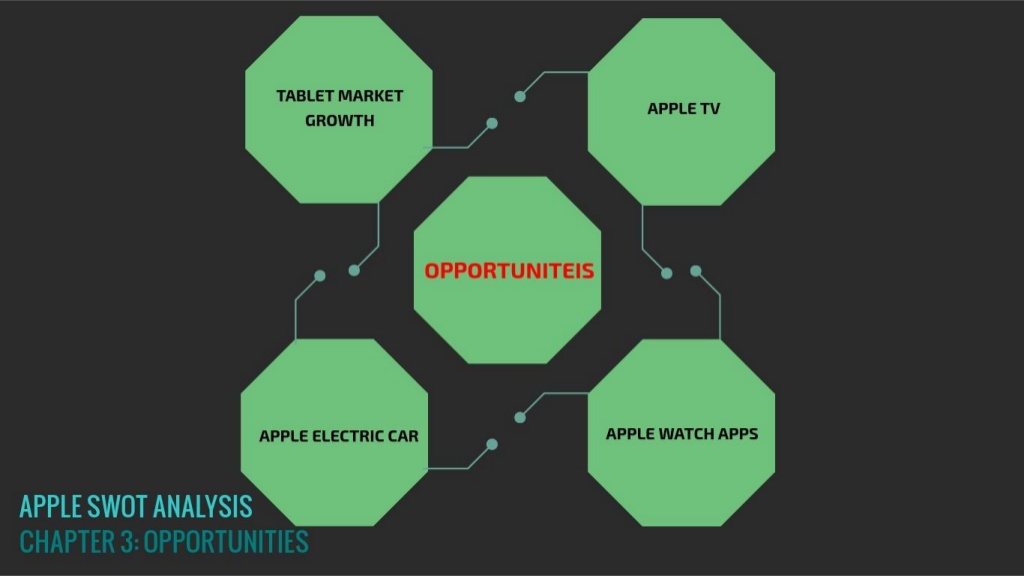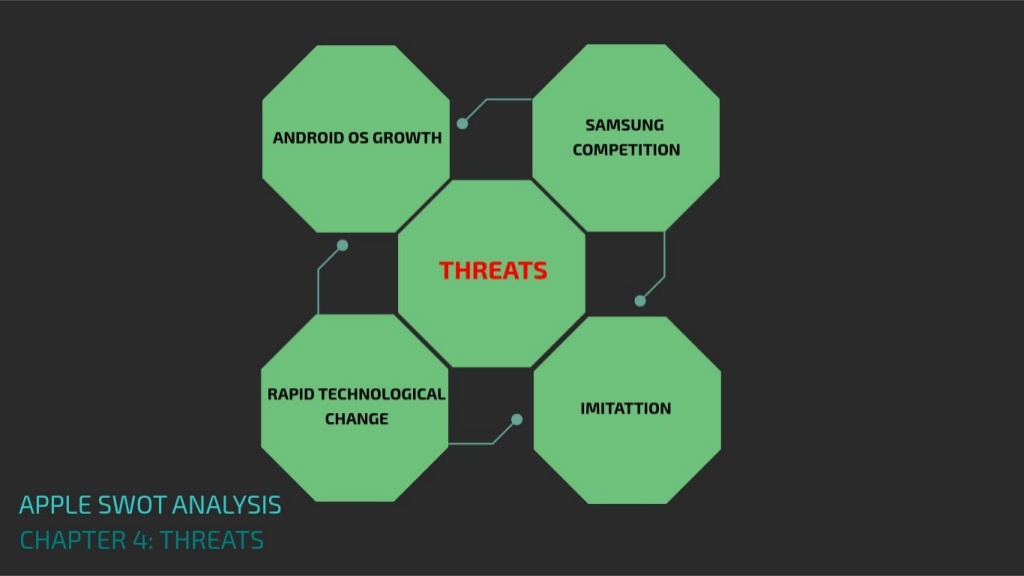Apple SWOT Analysis with Infographics

Order custom essay Apple SWOT Analysis with Infographics with free plagiarism report
 450+ experts on 30 subjects
450+ experts on 30 subjects
 Starting from 3 hours delivery
Starting from 3 hours delivery
Employees: 9,736
Sales: $6.13 billion (1999)
Stock Exchanges: NASDAQ
Ticker Symbol: AAPL
NAIC: 334111 Electronic Computer Manufacturing; 334119 Other Computer Peripheral Equipment Manufacturing (pt); 51121 Software Publishers
Key Dates:
- 1976: With $1,300, Steve Jobs and Steve Wozniak found Apple Computer, Inc.
- 1980: Apple converts to public ownership.
- 1982: Apple becomes the first personal computer company to reach $1 billion in annual sales.
- 1985: John Sculley assumes the helm after a management shakeup that causes the departure of Jobs and several other Apple executives.
- 1991: PowerBook line of notebook computers is released.
- 1994: Power Macintosh line is released.
- 1996: Acquisition of NeXT brings Steve Jobs back to Apple as a special advisor.
- 1997: Steve Jobs is named interim chief executive officer.
- 1998: The all-in-one iMac is released.
- 2000: Jobs, now firmly in command as CEO, oversees a leaner, more tightly focused Apple.
- 2001: iPod 1st Generation released
- 2011: Tim Cook named as CEO in August
- 2011: former CEO Steve Jobs dies from cancer in October
Questions and Answers about Apple
Apple Inc. is an American multinational technology company headquartered in Cupertino, California that designs, develops, and sells consumer electronics, computer software, and online services.
Tim Cook is one of the largest insider shareholders in Apple, according to U.S. Securities and Exchange Commission (SEC) filings. He owns 901,474 shares according to the latest filing. Cook was named chief executive officer (CEO) of Apple in August of 2011, succeeding the founder Steve Jobs.
Apple Computers, Inc. was founded on April 1, 1976, by college dropouts Steve Jobs and Steve Wozniak, who brought to the new company a vision of changing the way people viewed computers. Jobs and Wozniak wanted to make computers small enough for people to have them in their homes or offices.
Apple Computer 1, also known later as the Apple I, or Apple-1, is a desktop computer released by the Apple Computer Company (now Apple Inc.) in 1976. It was designed and hand-built by Steve Wozniak. Wozniak's friend Steve Jobs had the idea of selling the computer.
He enjoyed engineering, not management, and as other engineers joined the growing company, he no longer felt needed at Apple, and by early 1985, Wozniak left Apple again. Stating that the company had "been going in the wrong direction for the last five years", he sold most of his stock.
Apple SWOT Analysis
Conducting a SWOT analysis (also know as SWOT matrix) helps to evaluate company’s strengths, weaknesses, opportunities and threats.
As any other company, Apple has its blind sports. So, with the SWOT analysis of Apple, we can analyze the current situation of the Apple company and define what obstacles they’re facing today.
SWOT Analysis Apple Infographic 2019
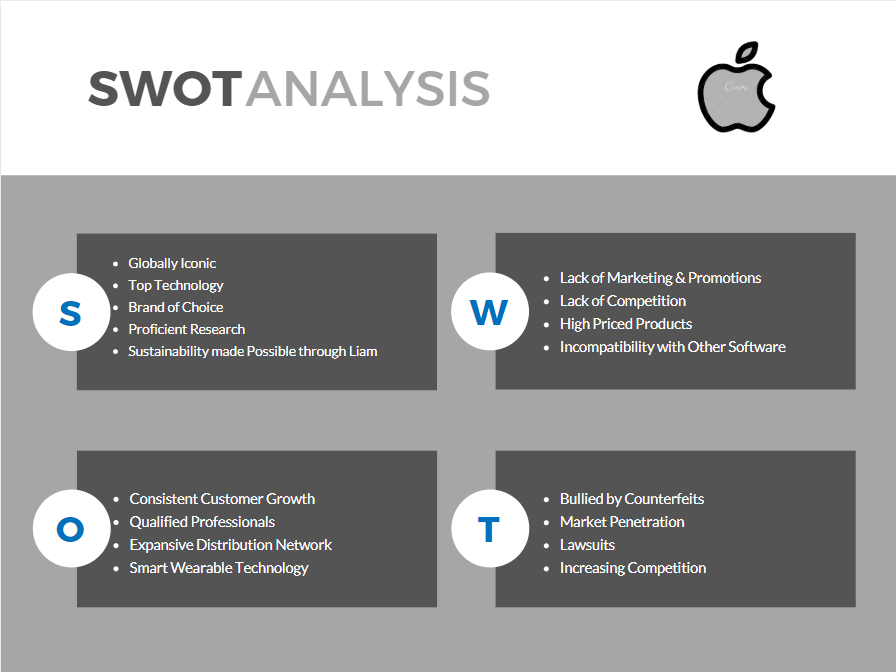 SWOT analysis Apple
SWOT analysis AppleApple Inc. is an American multinational technology company headquartered in Cupertino, California that designs, develops, and sells consumer electronics, computer software, and online services. The company's hardware products include the iPhone smartphone, the iPad tablet computer, the Mac personal computer, the iPod portable media player, the Apple Watch smartwatch, and the Apple TV digital media player. Apple's consumer software includes the macOS and iOS operating systems, the iTunes media player, the Safari web browser, and the iLife and iWork creativity and productivity suites. Its online services include the iTunes Store, the iOS App Store and Mac App Store, Apple Music, and iCloud.
Apple is the world's largest information technology company by revenue, and the world's second-largest mobile phone manufacturer after Samsung. In February 2015, Apple became the first U.S. company to be valued at over US$700 billion. The company employs 116,000 full-time employees as of October 2019 and maintains 496 retail stores in 21 countries as of May 2017. It operates the iTunes Store, which is the world's largest music retailer. As of January 2019, more than one billion Apple products are actively in use worldwide.
Apple's worldwide annual revenue totaled $215 billion for the 2019 fiscal year. The company enjoys a high level of brand loyalty and has been repeatedly ranked as the world's most valuable brand. However, it receives significant criticism regarding the labor practices of its contractors and its environmental and business practices, including the origins of source materials.
The Apple SWOT Analysis will analyze the strength & weakness of, opportunities & threats for Apple. It provides a broad understanding of the company’s strategic situation. The analysis can be used to evaluate the current business position of Apple. This can be used to instruct the overall business strategy session; it can also be used to go deep into a specific segment like marketing, production, and sales.
Swot analysis of Apple include:
Strengths
One of Apple’s biggest strengths is their brand identity. Their products reflect beautiful design aesthetic, wealth, simplicity, and creativity. This concept was widely recognized during Apple’s simplistic but vibrant dance commercials for iPod touch. Apple is now one of the most recognizable brands in the world. Their name goes a long way, and with such a dedicated fanbase, any product that is attached to the Apple name is often pre-ordered.
Financing Strength – It is very strong financial, as a result it can finance all of its investment and research to develop its product and services. In February 2015, Apple reported the revenue of $74.6 billion and an amount of $18 billion in profits for a single quarter. It is said to be the highest income in the history. It has big amount money as its retained earnings. It is as large as USD 96.36 Billion, as of September 2019. This retained earning account will help them to recover from any financial downtime in future. Also, this can be used as a backup of better research and development department.
Weaknesses
Premium Pricing – The high prices that Apple’s products command, long a blessing for the bottom line, are a credit to the company’s innovative flair and brand-building skills. They can be a hindrance when it comes to penetrating emerging countries, however, where GDP per capita is far less than it is in mature markets like the U.S. and Europe. This explains, in large part, why cheaper Android devices, many of which are made by low-cost Asian OEMs, have done so well in the developing world. And the price differential could be more of a problem down the road, compelling Apple to rethink its premium-focused strategy.
Limitations – It is not flexible while you want to connect it with devices that are from other brands. Apple iPhone does not allow you to get software installed from other sources other than its own providers. Also, Apple distributes its product by itself. And it kept its distribution channel narrow. For most of the time, they do not use any third parties to sell their products. Apple uses own website and Apple Stores to sell their products.
Opportunities
Apple ?ars – Naturally, with Facebook expanding with Instagram, Oculus Rift, Whatsapp and others and Google expanding in 10 different ways, Apple wanted to find out some new products which Apple could launch. Apple is now fixated on Apple Car which is supposed to be launched in 2020. Like any other product of Apple, we can expect great things from the Apple car as well.
Demand of Computers and Laptops – For the first time in the history, the sales growth of smartphones fell. According to Telegraph Magazine, “The sales fell by 3 per cent year-on-year from 345 million units in the first three months of 2015 to 334.6 million handsets.” A shift to computers and laptops sales may take place
Accessories and Gadgets – Apple can offer technological accessories and gadgets to increase its products. With a strong innovative historical background, it has created a strong familiarity of introducing new products. If it keeps this trend, it will go further toward greater profits.
Threats
Rapid Technological Change is the biggest threat which Apple and its competitors are experiencing nowadays. As customers have become more technology lover and they want more and more new products in very short time due to this, companies are facing pressure. So competition is very high and the one who cannot remain themselves with rivalry shortly be unsuccessful
Price Erosion – One of the amazing things about Apple has been its ability to maintain high ASPs for its products in the face of some pretty formidable competition from Samsung and others in the electronics industry. The company’s pricing power may eventually wane, however, particularly as the tech giant looks to grab a greater piece of the mass cellphone market. This would likely put a dent in the gross margin and contribute to a longer-term deceleration in earnings growth.
New Competitors – Emerging strong competitors who are offering the same type of products at the lower rate is the biggest threat. There are alternatives. Samsung is offering premium products as well as cheap products. Other competitors such as Sony, Asus, and Nokia are growing larger as well
Conclusion
The analysis shows that the major strength of Apple Inc. comes from the quality and uniqueness of the Apple products. The major weaknesses include various limitations and high price which can be overcome. There are huge opportunities for this company, and there are major threats from the competitors as well. Apple is a profitable company and its future is bright. But Apple should be careful in legal and political areas because as to reduce operating cost it has outsourced in different countries and it has to find a different alternative to reduce the risk as Apple buys application processor from Samsung which can create a problem for it.
SWOT analysis of Apple (materials for presentation)
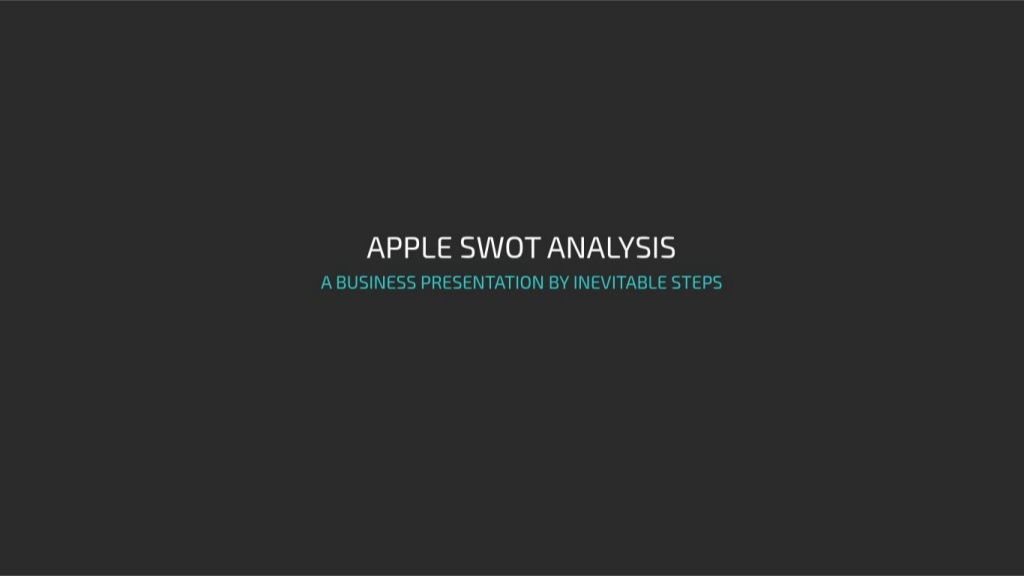
Cite this Page
Apple SWOT Analysis with Infographics. (2018, Feb 28). Retrieved from https://phdessay.com/swot-analysis-apple/
Run a free check or have your essay done for you

Save time and let our verified experts help you.
Hire writer

